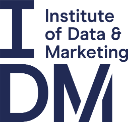In my previous article I looked at some of the arguments why an integrated digital marketing strategy is essential. Note the emphasis on 'integrated'. It's important digital marketing strategies aren't isolated from marketing and business strategies with which they should be aligned, in fact, a better label is 'multichannel marketing plan'...
In this follow-up post, I'll drill down into some of the detail which needs to be covered in a digital marketing plan, i.e. which activities a digital marketing plan should include. Often, knowing where to start can be the most difficult challenge, unless you have an effective structure in place.
Structuring your digital marketing plan
For the overall structure of the plan, I recommend the SOSTAC® framework developed by PR Smith—my co-author of Digital Marketing Excellence. SOSTAC® is a great framework for structuring business, marketing or digital marketing plans since it's relatively simple and logical, so it's easy to remember and to explain to colleagues or agencies. SOSTAC® is a strategic planning process framework that gives you a clear structure to work through to create and manage your plan.
Sections to include for a digital marketing plan are:
Situation analysis means 'Where are we now?' For multi-channel marketers, questions include:
- Are we measuring results accurately through analytics, what is the contribution from different channels?
- Which type of audience are we reaching online?
- How do we compare to our competitors performance?
Objectives mean 'Where do we want to be?'. Questions to answer include:
- What is the growth forecast based on digital acquisition and retention improvements?
- What is the breakdown of leads and sales by channel to hit the business plan target.
Strategy means 'How do we get there?' Strategy summarizes how to fulfill the objectives. It is the shortest part of the plan, but arguably, the most important, as it gives direction to all the subsequent tactics. It answers questions including:
- Which segments will be targeted with which propositions?
- What positioning will we choose?
- How will leads and sales targets be achieved?
- Which channels should we focus our media investment on?
- What communications strategies will be used to support customer acquisition, conversion and retention?
Tactics are the details of strategy (the marketing mix, communications mix and channel mix are the tactical tools). They highlight on a campaign timeline exactly which tactics occur when. For example, how do we improve our 'always-on' communications, e.g. how to harness Marketing Automation alongside Content Marketing to generate and nurture leads.
To help you plan your multichannel marketing tactics effectively, the Smart Insights RACE Planning system will provide you with a simple framework. See the Smart Insights article What is a digital marketing strategy?.
Action relates to planning implementation of the strategy, i.e. what is our plan? This includes project plans for strategic digital initiatives and detailed plans for different tactics such as editorial plans for content marketing.
Control is needed to ensure the plan stays on track answering - did we get there? for different milestones. It involves reviewing performance against target using digital marketing dashboards and putting corrective actions in place.
The details of digital marketing tactics
One of the challenges of creating a coherent digital marketing plan is that there are so many potential tactics to be prioritized for different customer touchpoints as I showed in the digital customer lifecycle graphic on a previous post on the IDM blog.
These online marketing tactics all help nudge the prospect along the digital marketing funnel which is summarised in the RACE planning framework. Key tactics include:
- Plan - Use a data-driven approach to review your current digital marketing effectiveness, customize analytics to the business, set up KPI dashboards and SMART objectives to create a strategy of prioritized improvements to how you deploy digital marketing media, technology and data to increase leads and sales
- Reach - Build awareness using 6 key paid-owned-earned marketing techniques which will drive visits to your site i.e. search marketing (organic and paid); Online PR and outreach; Partner marketing; display advertising and Programmatic; Email marketing and organic and paid social media marketing.
- Act - Encourage interactions on your website or social media to help you generate leads for future. Key tactics include content marketing, landing page optimization and improving customer journeys for different personas.
- Convert - Use retargeting, nurturing, conversion rate optimization and multichannel selling to remind and persuade your audience to buy online or offline if phone and face-to-face channels if these are important to you.
- Engage - Increase sales from existing customers by improving personalized communications using web, email and social media marketing
You can find out more about SOSTAC® from PR Smith's website and view this example of SOSTAC®. For a structured breakdown of each part of RACE into 25 key activities, consult Smart Insights.
Dr Dave Chaffey helped design and deliver the IDM qualifications in Digital Marketing when they were first launched. Our Professional Diplomas are designed to help you plan, manage and evaluate direct and digital marketing campaigns. Our Postgraduate Diplomas will equip you with the skills and confidence to define and implement a robust direct and digital marketing strategy.
